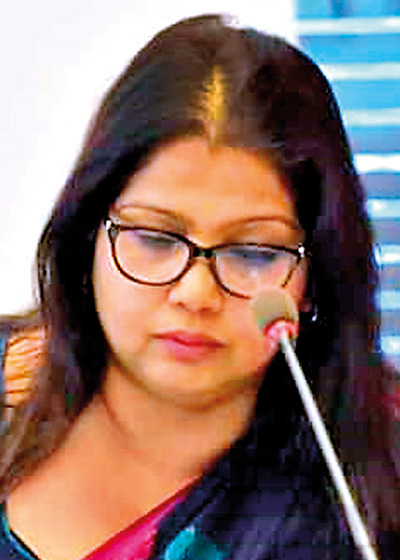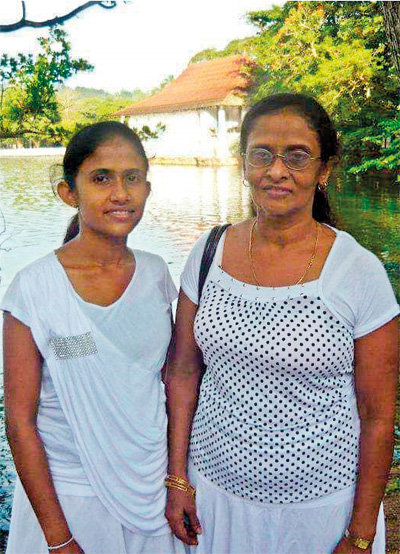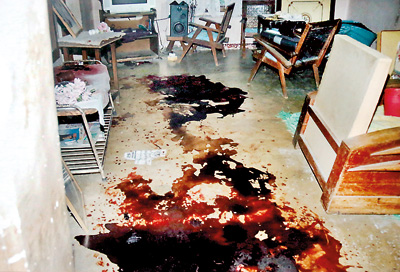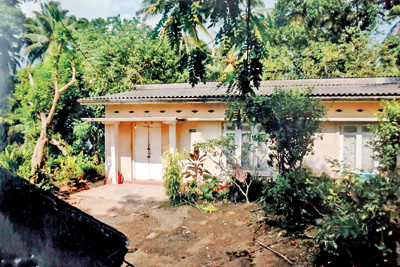News
Heroin discovery, arrest led to Kotakethana double murder; death sentence for neighbour
It was the accidental discovery of a packet reportedly containing narcotic drugs in the home of former Provincial Councillor Dharmasiri Lokugamhewage and the subsequent arrest of his son Sampath, that led to the Kotakethana double murder in 2012, the Colombo High Court ruled this week.
Kavindya Chathurika (19) and her mother Nayana Nilmini (52) were brutally murdered by Lokugamhewage Dharshana alias Raju (accused), the brother of Dharmasiri Lokugamhewage on January 31, 2012.

Deputy Solicitor General Lakmali Karunaratne
According to the evidence given in court by Nilmini’s son Kusal Chaturanga, his mother had prior to her death told him that ‘Raju’ had yelled at her suspecting that they had tipped off the police that his nephew Sampath Lokugamhewa was possessing drugs.
The nephew Sampath had been arrested by the Police for the possession of 15.7 grams of heroin.
Chaturanga added that previously Nilmini and Kavindya had come across a packet of drugs, while they were helping out at a wedding held in Dharmasiri’s house where the accused lived with his wife. Raju, who noticed this, was quick to grab the parcel containing the drugs.
It was also adduced that Dharmasiri’s house was located a few metres away from where the two victims lived.
While Chaturanga was giving evidence in court, the defence had questioned him why he did not mention any of this to the police at the early stages of the investigation. Chaturanga replied: “I was mourning the loss of my mother and sister and the way the accused were acting by serving tea and checking up on the houses, did not lead me to suspect them.”
The court accepted his explanation. It found it strange that despite the close relationship the family shared with the victims, neither Raju nor his wife had attended the funeral or the seventh day almsgiving.
Whilst examining the other circumstantial evidence adduced during the lengthy trial, Judge Vikum A. Kaluarachchi reached the conclusion that the murders were proved beyond any reasonable doubt by vital evidence such as a blood stained manna knife and a missing pair of earrings, belonging to Nilmini.
Around 10 p.m. on February 2, 2012, Marawila Patabandige Ariyawansha, a neighbour of the victims, said he received a call from Nilmini’s husband Rohitha. He said he had been trying to reach her phone but there had been no response. Ariyawansha had gone to the house thereafter. After many failed attempts to get a response, he had gone to the back of the house to find the kitchen door slightly ajar. The house was in darkness. He had then informed his son about this, and contacted the police.

The gruesome murder of mother and daughter in 2012 shocked the country
Ratnapura Police officer Sarath had arrived at the scene. Ariyawansa who had also been there had attempted to enter the house, but was stopped by officer Sarath, who had pointed to blood stained footprints on the floor leading from inside to the door.
When police officers finally entered the house they found Nilmini’s body on a bed in a room.
Kavindya’s body was found at the Opatha Estate at Kotakethana by the third prosecution witness who was on his way to chop wood on February 2, 2012. He was quick to inform the estate watcher, who then notified the Police.
The first piece of evidence for the prosecution was that of grocery owner Padmakumara who claimed Nilmini used to stand outside his shop, waiting for her daughter to finish her classes. He had last seen the two at 8.30 pm on January 31, 2012.
This evidence was strengthened by the post-mortem examination reports which stated the deaths of Nilmini and Kavindya could have occurred on January 31, 2012.
Furthermore, according to the evidence led by the defence, Raju’s son stated that when he went to sleep on the night of January 31, 2012, his parents were both awake. He said that though his parents usually slept in their room, when he woke up the next morning (Feb. 1), his father Raju was sleeping on a chair in the hall.
As the evidence of Dharmasiri was led, the court observed that he had on numerous instances described the incident to have occurred on January 31, 2012. But, upon further questioning, he stated this was a mistake. However, the court remained suspicious of his constant remembrance of January 31, 2012.
Dharmasiri’s evidence did not prove he was present in the vicinity on the date the incident took place. But, he did add that his brother’s usual routine was to go to work around 8 am. As Raju had earlier stated in court that he did not go to work that day. This led the court to believe that Raju had an opportunity to commit the murders because of his lack of explanation as to how he spent January 31, 2012.
A vital evidence connecting the murders to Raju was the manna knife. This was because the post-mortem examinations conducted on Nilmini and Kavindya showed the fatal injuries were caused by a sharp, heavy weapon.
A person called Sirisena who worked with Raju, gave evidence in court to say Raju had used this manna knife at work. However, after February 2, 2012, he had not seen the knife. Examining the knife in Court, Sirisena also said, a wire on the base of the knife was missing. His evidence, coupled with the court’s observation that the absence of the wire, depicted a lighter spot on the base of the knife proved that the knife was in fact an old one.
 DIG Jagath Rohana, who had functioned as the Officer-In-Charge of the Murder Investigation Unit of the CID, accompanied Raju to his house in Kahawatte following a court order. Thereafter, on a disclosure by Raju, the manna knife was discovered from under a concrete slab at the back of the house. A pair of Nilmini’s earrings were also found from a space on the wall inside the accused’s house.
DIG Jagath Rohana, who had functioned as the Officer-In-Charge of the Murder Investigation Unit of the CID, accompanied Raju to his house in Kahawatte following a court order. Thereafter, on a disclosure by Raju, the manna knife was discovered from under a concrete slab at the back of the house. A pair of Nilmini’s earrings were also found from a space on the wall inside the accused’s house.
The officer informed the court that if it was not for Raju’s direction, the manna knife and the earrings could not have been discovered by anyone else.
These recoveries proved to be the vital link to the case.
The forensic analysis of the manna knife revealed a strand of hair, about 5 centimeters in length. A brown patch of blood was observed between the gap created by a missing wire and the blade of the knife. While the strand of hair did not create a pattern with any of the DNA samples of both victims, the brown patch, proved to match the DNA samples acquired from Nilmini. This proved to be the strongest link that bound the chain of evidence to prove that Raju was the killer of Nilmini.
But, it was the bed sheet on which Nilmini’s body was found in her home that led to the connection of Kavindya’s murder. The forensic analysis on the sheet observed four stains, of which one matched the DNA of Nilmini, while two others matched that of Kavindya.
This proved to the court that though Kavindya’s body was found at the Opatha Estate, she was murdered in the house with her mother. Furthermore according to the Judicial Medical Officer’s opinion, it was clear that her injuries could have been inflicted by the same manna knife.
The final clues were the earrings, which according to Chaturanga, his mother had always worn. But, at the initial investigation no such earrings were found on her body, though they were later proven to be the ones recovered from the accused.

The victims' house and (inset) the blood-stained floor
The court observed that Nilmini was bound to have screamed out when she was being murdered. Nevertheless, as claimed by the accused, who lived in the neighbouring house, no such screams were heard by them.
Instead they had only decided to investigate after a phone call was received by Rohitha Sellahewa. This gave rise to further suspicion. The court came to the conclusion that if the accused did commit the crime, he and his household would act like they didn’t know of the crime in the first place.
The crime scene investigations showed no signs of a break in or a forced entry. Therefore, the only logical conclusion was that the crime was committed by a known individual. This only seemed to work against Raju, who was proven to be the only individual to have had the opportunity to commit the crime.
He was sentenced to death.
Rienzi Arsakularatne PC with Attorney at law Namal Karunaratna appeared for the accused.
Deputy Solicitor General Lakmali Karunaratne with Senior State Counsel Maheshika Silva appeared for the prosecution.
(Additional reporting by
Joshua Surendraraj)

